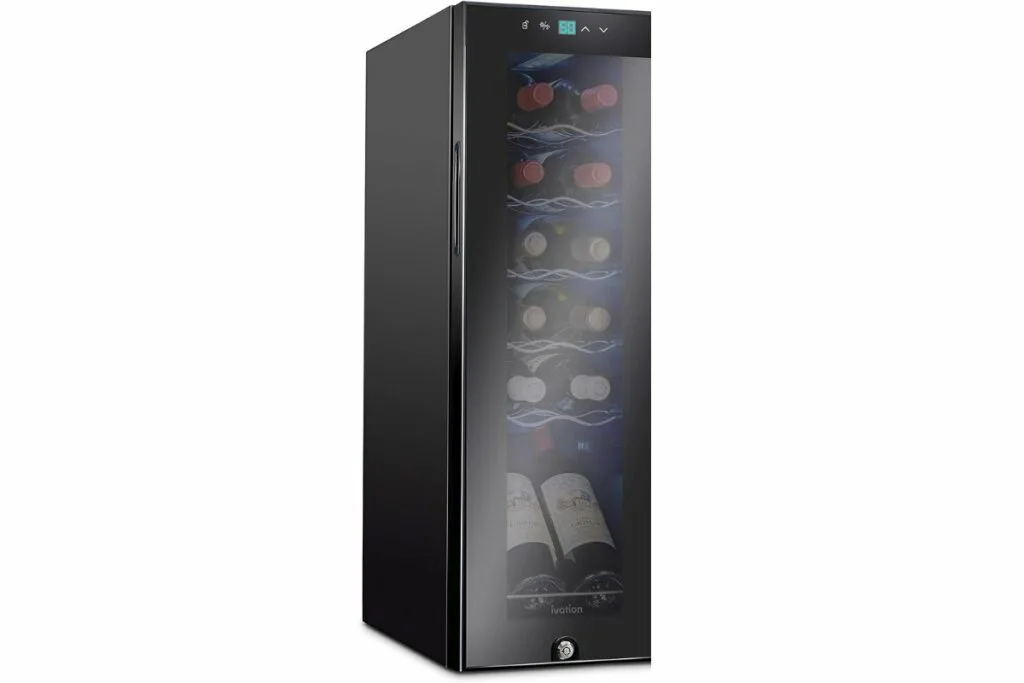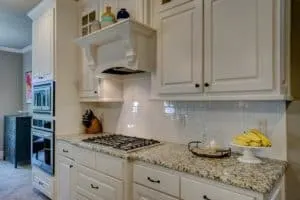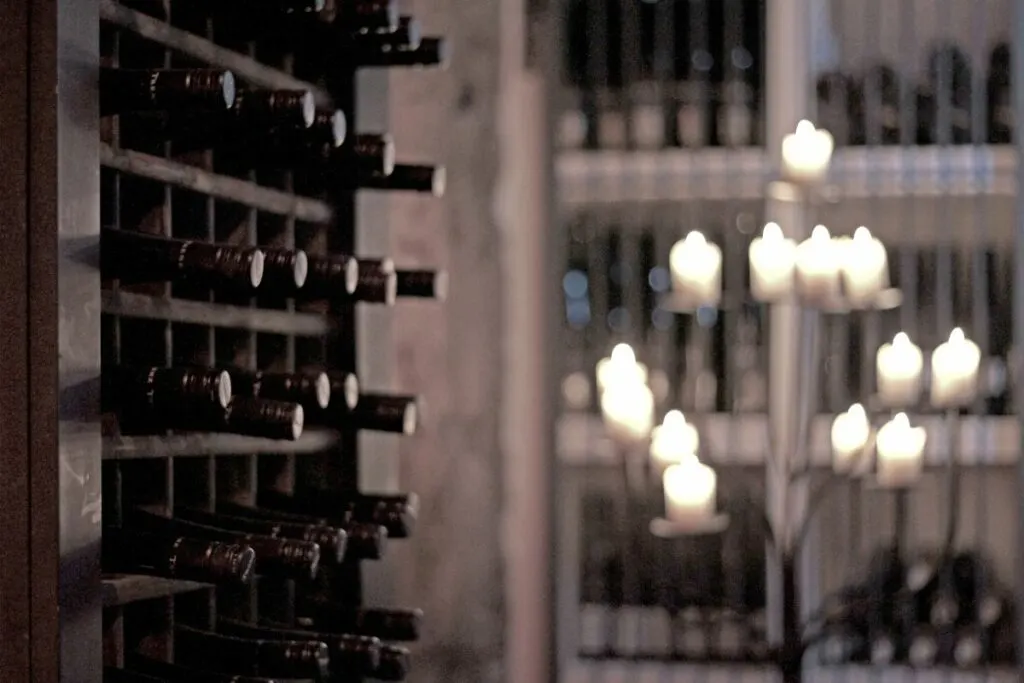As an Amazon Associate, I earn from qualifying purchases with no additional costs for you.
For those that enjoy collecting many bottles of wine and don’t want to drink it right away, you could start looking at investing in a wine fridge. This fridge is specifically designed to store wine at a stable temperature and controls for things like humidity, which may cause unwanted chemical changes over time. They are an additional cost you will need to consider in running.
Are wine fridges expensive to run? Wine fridges, also referred to as wine coolers or refrigerators, are not incredibly expensive to run if you follow the rules of efficiency. If used efficiently and to match the number of bottles you have, large units will cost upwards of $100 per year, while small ones sit around $40 in electricity.
It may surprise a lot of people, but wine coolers can be necessary to store wine properly, but only under specific circumstances, which I highlight in full in this article I wrote. In this article, we will discuss the cost of running a wine fridge.

TIP: If you want to check out the best refrigerator for wine storage, I recommend trying out the Avation (18 bottles) compressor refrigerator with Wi-fi smart app control cooling system. You can find this refrigerator by clicking here (Amazon link).
When Wine Fridges are Expensive to Run
These are some of the cases when wine fridges can be expensive to run:
- Using thermoelectric technology for large fridges or in hot weather
- Using compressor technology with very few bottles
- Buying multiple small fridges
- Putting a wine fridge up against a wall
- Exposure to heat
- Opening and closing the fridge frequently
The examples of what makes a fridge expensive are also the precautions you should take to make a wine fridge incredibly economical. Practicing efficiency and being mindful of energy spending keep wine fridges at a limited increased cost. While this list only states 7 named examples, it’s double that number as well will make the counter-argument on its cost.
Types of Wine Fridges
By looking at examples of wine fridge expenses, you can more efficiently decide what type of wine fridge is best for you and if you should make the investment in one!
Before we can explain the key examples of when wine fridges are expensive to run, we have to understand the two types of wine fridge technologies that are used.
There are two primary types of wine fridge technologies: thermoelectric and compressor. Each is used for specific purposes depending on the type and amount of wine that you have.
Thermoelectric technology uses a fan to keep the temperature of the wine below room temperature. It essentially sucks the hot air out of the fridge to keep the bottles cool.
This is a continuously running appliance that is well-suited for collectors who plan to keep less than 20 bottles in a wine fridge.
Compressor technology is more traditional and is similar to a regular refrigerator. These wine refrigerators are designed to keep wine at specific temperatures with an internal thermostat, depending on the type of wine you plan to store.
These fridges do not run continuously and are triggered by increases in temperature. Regular refrigerators are too cold for wine storage.
TIP: Many people don’t understand the differences between a wine cooler and a wine refrigerator. Read all about their differences in this article. Can you put your new refrigerator next to the oven? Find out here.
Recommended Inexpensive-to-Run Wine Refrigerator

The Ivation 12 Bottle Wine Cooler Refrigerator is a great choice for wine storage because it offers dual temperature zones for chilling both red and white wine simultaneously.
It uses thermoelectric cooling technology, which prevents the tiny wine-damaging micro-vibrations associated with other forms of cooling. Thermoelectric cooling is more energy-efficient as well.
The slim design makes it easy to store in tight places with enough clearance from the wall to prevent overheating, which can also run up electricity costs if unaddressed. If you are concerned with operating costs, this is the best energy-efficient model you can grab.
I was very surprised by how cheap it was on Amazon and what some of the customer reviews had to say about this wine refrigerator (Amazon link).
Once you pop the cork, most wines go bad within a day or so. But a Coravin Wine Preservation system (available for a great price on Amazon) can extend the life of your opened wine for weeks or even months. It is awesome. You should check it out and see if it will fit into your lifestyle.
All good wine needs good products. Read on to discover our favorites!
Recommendation box: Everything you need to enjoy your wine as much as possible. All recommended products are personally tested and regularly used by experts from this website (Amazon links):
> Ivation Wine Cooler – Energy-efficient wine cooler for 18 bottles with Wi-fi smart app control cooling system.
> Wine Rack – Beautiful, elegant wood rack for up to 7 bottles and the choice of vertical or horizontal storage.
> Durand Wine Opener – Classic vintage wine opener (we like all these classic staff).
> YouYah Iceberg Wine Decanter – The most beautiful and handy wine decanter we personally use.
> Bormioli Rocco Wine Glasses – A set of eight elegant and traditional wine glasses made in Italy.
> Vintorio Wine Aerator – Simple but really useful wine aerator for a reasonable price.
> The Original Vacu Vin Wine Saver – The best wine saver on the market in a package with two vacuum stoppers and two wine servers.
And if you want to become a true connoisseur of wine, we recommend reading the book Wine Folly: The Essential Guide to Wine (Amazon link), where you will find all the information you need about winemaking, wine varieties, flavors, and much more.
7 Examples of When a Wine Fridge is Expensive

The examples we have pulled together definitely drive the cost up on a wine fridge. If you can avoid these issues and focus on efficiency, it will help keep these energy and electricity costs down.
1. Large Thermoelectric Fridges
As we noted, thermoelectric technology keeps hot air out of the fridge with a fan system. This can be an efficient system with a smaller amount of wine, as the fridge itself will not be too big. The problem you run into with larger fridges is that it will take much more energy to pull warm energy out of a larger space.
A fan will have to work much harder to keep temperatures down. We do not recommend purchasing a large thermoelectric fridge. This technology is best suited for those who only plan to store a small number of bottles.
You should purchase a larger compressor fridge if you plan to hold lots and lots of bottles. When holding fewer wine bottles, thermoelectric fridges can use less energy and are less expensive to run.
You should use a thermoelectric fridge if you have two or fewer cases in your collection. Anything more than this should be placed in a compressor to save energy and be more effective. The initial cost will be greater in purchasing a compressor fridge, but long-term savings will be found will less energy usage.
2. Thermoelectric Technology in Hot Weather
Thermoelectric technology bases itself on the temperature of the room that the fridge is in. If a room is hotter, the fridge will need to become more reliant on the fan to keep the temperatures regulated.
If your home stays at a fairly high temperature, a thermoelectric fridge will not be very efficient in keeping the wine at a suitable temperature.
Making the fridge work twice as hard to maintain the desired temperature will drive electricity costs up and also make the fridge louder as the fan works. Compressor fridges are much better choices for hot weather because they generate cold air to keep the bottles at a consistent cooler temperature.
3. Fridge Exposure to Heat

As we have discussed, heat and wine fridges are not the best combinations. Even if you have a compressor wine fridge, keeping it in a very warm location can still hurt temperature regulation.
Scientific studies by Pérez-Coello & colleagues (2003) and by Scrimgeour & colleagues (2015) both confirm that elevated storage temperatures can negatively affect the wine.
Because of this, you will want to keep your wine fridge in a cool, dark location if possible. This will keep the fridge from working harder than it needs to.
A fridge keeps wine cool, but it doesn’t act like a total shield from the elements. Direct exposure to sunlight is incredibly warm and does have an impact on the fridge’s ability to keep the contents inside cool. This is especially true with a thermoelectric fridge that does not do well in hot conditions.
Direct sunlight and heat to a wine fridge can result in multiple issues that will cost you:
- Harder working fridges require more electricity for temperature regulation
- If the UV rays can penetrate the fridge in any way, this breaks down the wine’s compounds
- The fridge’s exterior can be broken down, and more extreme temperature changes can interfere with its ability to work at all
Keeping your wine fridge in the sun is not only expensive, but it can also mean that you need to purchase a replacement sooner.
4. Compressor Fridges for Small Collection
If you do not plan on storing many wine bottles and don’t plan to access them anytime soon, using a compressor can be costlier for only a few bottles. Thermoelectric technology will use less energy if you will only be operating a small fridge.
The exception, of course, is if the fridge is housed in warmer environments. Compressor fridges should be used in warm areas. If you are going to use a smaller fridge, go with the thermoelectric, but if you plan to collect over time, investing in the compressor is smarter in the long run.
Unlike the thermoelectric technology that runs constantly, compressor fridges only run in cycles when they are triggered by temperature drops with an inside thermostat.
This means that not much energy is used with a larger one since it doesn’t run all the time. Thermoelectric fridges are advised for small collections over compressors as they are more efficient at that size.
5. Buying Multiple Small Fridges
Making a larger initial investment with a larger fridge will be more expensive at the onset, but cheaper for your electricity in the long run. If you are new to collecting and haven’t accumulated a lot of bottles yet, buying a larger compressor fridge will benefit you down the road.
Purchasing multiple fridges is not incredibly efficient because:
- It requires more overall electricity and energy consumption with separate units
- It takes up more room in a home or space
- More outlets are taken up that could be used for other things
There are only two reasons we think you should purchase multiple fridges for:
- Keep red and white wine separate: Reds and whites are best stored at slightly different temperatures. If your fridge only has one temperature setting, you may feel the need for separation. This can be easily solved in one larger fridge with the location of the bottles. Red wines can be stored near the top of the fridge at a higher temperature while white wines are kept cooler at the bottom. If this doesn’t do the trick, two fridges can be used but will drive costs up.
- Long term storage needs and serving needs: Because wine fridges are most efficient when they are not opened often, separating bottles for long-term storage (cheaper electricity costs when left untouched) and having a different smaller fridge for serving can be a good idea if you want properly chilled wine without wasting energy with constant opening and closing of another fridge.
If you don’t fall into either of these categories, try sticking to one fridge that will hold your collection and your nearby plans for acquiring more.
An investment in a larger fridge may require slightly more energy to cool at its size compared to a small fridge, but can easily be maintained at its ideal cooler temperature with minimal additional energy expenditure.
TIP: If you don’t have a wine cooler, find out here how to keep your wine cool. Thinking of storing your wine in the garage? Find out here if you should.
6. Wine Fridges Against a Wall
An easy way to make a wine fridge work harder is to back it up directly against a wall. Regardless of the type of wine fridge you buy, the machine needs to generate heat to produce the energy required to cool the bottles. This heat needs to escape somewhere, and this is usually through the back of the fridge.
Against a wall, these vents cannot release the air to cool the machine down properly. When this happens, the machine will work even harder to make sure that heat doesn’t impact the bottles inside the fridge.
When orienting a wine fridge in your desired space, make sure you:
- Keep the fridge at least 5 inches from the back wall and any walls nearby
- Do not keep it in a confined room that does not receive good ventilation
Just like you give the wine time to breathe, you need to give your wine fridge the room to do the same.
7. Opening and Closing Fridge Frequently
Just like leaving a back door open on a hot day with the air conditioning on, leaving a wine fridge door open or opening and closing it often will have an impact on the internal temperature of the fridge. This applies to both thermoelectric and compressor fridges but will have more of a negative impact on the thermoelectric fridges which are more sensitive to temperature change.
TIP: Most wines go bad once you pop the cork within a day or so. But a Coravin Wine Preservation system (available for a great price on Amazon) can extend the life of your opened wine for weeks or even months. It is awesome. You should check it out to see if it fits your lifestyle.
Do Wine Fridges Use A Lot of Electricity?
Compared to a traditional refrigerator that keeps food and items at a much colder temperature than a wine fridge, the fridges used to store wine do not use a lot of electricity. Normal fridges use anywhere from 350-800 watts of electricity, while wine fridges typically use around 100 watts on average.
Energy consumption will be impacted by your efficiency in operating. Thermoelectric fridges use more energy and electricity than compressor fridges on average because they are continuously running.
For the smaller fridge choice, thermoelectric will use slightly less wattage than compressor fridges. For large units, thermoelectric fridges will double their wattage to account for increased size, which increases electricity usage significantly.
If you are not sure of the wattage when purchasing, you can do simple math to find it by multiplying volts with amperage. When used appropriately and efficiently, wine fridges do not use a lot of electricity compared to some of the larger appliances in your home.
The benefits a wine fridge brings in storing your wine outweigh the cost of electricity being used.
TIP: Is your wine refrigerator icing up or leaking? Find out why and what you can do about it in this article and this one.
Breaking Down Running Costs of a Wine Fridge
Not only do you want to know the amount of electricity that is used by your wine fridge, but it will be helpful to understand how this usage impacts your electricity bill.
After the upfront costs of making the wine fridge purchase, you will have to deal with the electricity that the fridge generates. We have calculated this into annual costs, so you have a good idea of what to expect.
Purchasing a higher quality wine fridge will help bring your electricity costs down because it is designed to operate more efficiently. We are basing our costs off of wine fridges that are high functioning.
Costs related to electricity for the wine fridge will be impacted by:
- Your maintenance and operation of the potential costs drivers mentioned in the article
- The size of the fridge
- The technology that is being used: thermoelectric vs. compressor
Small thermoelectric wine fridges should only cost you on average of $40 per year. This is when the fridge is operating most efficiently and is not being wasted with large size or exposed to warm and unsuitable conditions. Large compressor fridges will be more expensive, at an average of $100 per year, but they also can accommodate many more bottles.
| Wine Cooler Part | Costs | Products on Amazon |
|---|---|---|
| Compressor | $100 – $600 | Best Compressors |
| Thermostat | $5 – $30 | Best Thermostats |
| Start relay | $7 – $16 | Best Start Relays |
| Condensor motor | $30 – $250 | Best Condensor Motors |
| Overload protector | $5 – $10 | Best Overload Protectors |
| Cooling fan unit | $10 – $25 | Best Cooling Fan Units |
| Control board | $60 – $250 | Best Control Boards |
| Temperature switching PCB | $30 – $50 | Best PCBs |
| Thermal plate | $30 – $50 | Best Thermal Plates |
Why Is A Wine Fridge Worth the Expense?

If you truly care about keeping wine at its ideal temperature so that the compounds and contents in the wine will remain intact for long periods, a wine fridge is a good investment.
Spoiled bottles of nice wine will be much more expensive to replace than the investment and yearly electricity costs that are required to run the fridge.
Unlike a traditional fridge that is too cold for wine storage, the wine fridge keeps your wine at the ideal temperature consistently. This will allow you to keep your wine stored for long periods without fear of anything happening to it.
will have to decide the ideal technology system based on the type and amount of wine you have. We recommend investing in a larger compressor fridge if you are a collector.
While it may be more expensive when comparing both types of fridges at their most efficient level, it is bound to be more efficient in the long run compared to the greater risks associated with running a thermoelectric wine fridge to its greatest efficiency (plus it only stores a few bottles well).
Keeping Wine Fridge Costs Down

Wine fridges do not have to be expensive to run if you avoid the examples that were listed throughout the article. The cost of running a wine fridge is largely dependent on the care and effort you put into maintaining it and keeping it in ideal conditions. To make sure that it is not expensive to run, you must:
- Only use small thermoelectric fridges and use them in cooler locations
- Keep larger collections of wine in compressor fridges
- Avoid purchasing multiple small fridges versus a larger one
- Keep your wine fridge away from walls
- Make sure your wine fridge is kept in a cool, dark place
- Try to keep the fridge closed and only access it sparingly
Wine fridges are not designed to be accessed all the time. If they are, especially with thermoelectric technology, you will alter the internal temperature and use more electricity.
Are Wine Fridges Expensive to Run?
We have mapped out in this article that the expenses of a wine fridge are largely dependent on how you operate them.
The examples that drive costs up also serve as a set of guidelines for making sure that wine fridges are efficient appliances that are worth the investment and have minimal energy usage. When used efficiently, wine fridges are inexpensive to run.
TIP: Check out this page for a complete list of wine products and accessories I love. You’ll find my recommendations for wine refrigerators, decanters, and aerators and the best place to buy wine online. Click here to see the complete listing.
Scientific Literature Referenced:
Pérez-Coello, M., González-Viñas, M., Garcı́a-Romero, E., Dı́az-Maroto, M., & Cabezudo, M. (2003). Influence of storage temperature on the volatile compounds of young white wines. Food Control, 14(5), 301-306. doi:10.1016/s0956-7135(02)00094-4 (via: ScienceDirect)
Scrimgeour, N., Nordestgaard, S., Lloyd, N., & Wilkes, E. (2015). Exploring the effect of elevated storage temperature on wine composition. Australian Journal of Grape and Wine Research, 21, 713-722. DOI:10.1111/ajgw.12196 (via Wiley)
